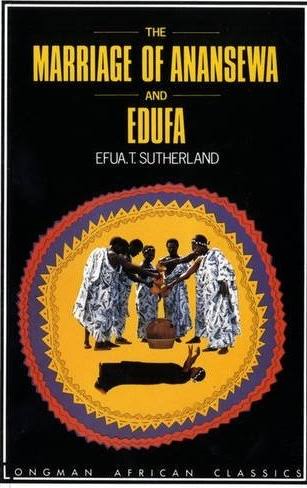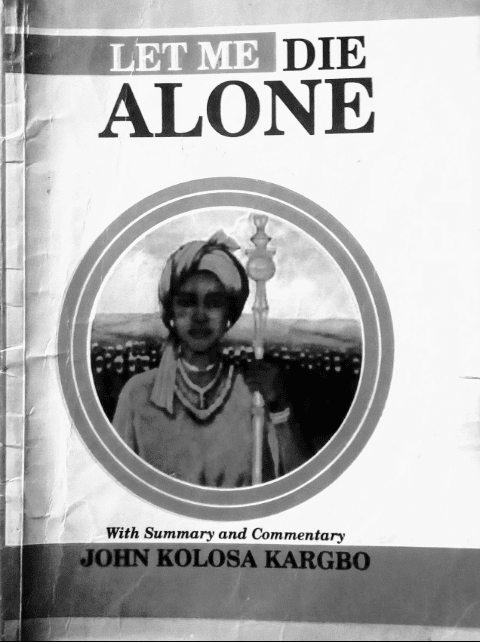Wole Soyinka’s The Lion and the Jewel is a comic play that borders around the struggle between a mock of Western “civilization” and “medieval” African culture, a conflict between beauty and wit, etcetera.
Thus far, I have given the synopsis of the play in a post, Talking Points in Wole Soyinka’s The Lion and the Jewel, and some other salient parts such as themes, figures of speech, and characterisation.
In today’s post, I shall examine some of the dramatic techniques in Soyinka’s The Lion and the Jewel.
The most discernible and perhaps the most significant dramatic techniques used in the play are flashback, mime or imitation, frame story or story within story, and plot twist.
Some of these are interconnected in the play. In an instance, frame story and imitation serve the same effect, more of means to an end; they help evoke past events, ones that had happened before the commencement of the play, which places the two dramatic techniques in effect within the ambit of flashback technique.
Flashback
Flashback is a transition (in literary or theatrical works or films) to an earlier event or scene that interrupts the normal chronological development of the story.
In other words, it is the recollection of past events in a literary work. This much can be found in The Lion and the Jewel.
The first instance of flashback occurs just after Sidi received news of her pictures being featured in a magazine. Together with her female informants and the cajoled Lakunle, she re-enacts the events that preceded her new-found fame, apparently the coming of a wandering stranger to Ilujinle Village.
The flashback is neatly achieved through the accompaniment of drums, improvisations, and mime and imitation. This brings the audience on the same page with the characters.
Flashback device is again used in Lakunle’s recollection of how Baroka bribed the white Surveyor to divert a railway track intended to pass through his village elsewhere.
Mime
Mime involves using gestures and body movements without words in a play. The Lion and the Jewel has its fair share of this. The first use of mime occurs during the recollection of the entry of the stranger to Ilujinle. Much of this is conveyed using bodily movements. From the stranger’s (technically Lakunle’s) handling of the devil horse (automobile), his bewilderment at the mesmerising beauty of Sidi, to being chased by the villagers, to shutters of the periphrastic “one-eyed box” (a camera), etcetera.
Although the mime is interrupted by Baroka, this is only brief. He is absorbed into the mimetic exercise in no time to play his role as the Village Head.
Another discernible instance of mime is when Lakunle narrated to the duo of Sidi and Sadiku of how Baroka thwarted the plan for a rail track to course through Ilujinle Village. This action, he attributes to Baroka’s fear that the railway track might usher in ‘civilisation’ that would threaten his authority in the village.
The mime, though punctuated by Lakunle’s commentary, shows Baroka, his wrestler, the white Surveyor, prisoners and two warders; it projects their movements and gestures and of course how Baroka bribed the Surveyor with gifts so that the intended railway track would be taken somewhere other than his village.
Mime is also put in play after Sidi’s dialogue with Baroka. The mummers would later come upon Lakunle and Sadiku while they were waiting for Sidi. The mummers mime Baroka’s descent from manhood, a testament to the fact that Sadiku has told them of Baroka’s little secret, his seeming impotence.
Frame Story
Alternatively known as story within a story, frame story is stressed again by the recollection of the Stranger’s entry into Ilujinle. The characters in The Lion and the Jewel (notably the Girls, Lakunle, Sidi, and much later Baroka) enact a play within the play, assigning themselves roles.
The Girls, on their part, are shifty; they act first as the Stranger’s vehicle and later as the villagers. Lakunle is coaxed to take the role of the Stranger since he appears not different from the said wandering Stranger in mannerism. Sidi is just Sidi and Baroka remains Baroka.
This improvisation is a clear instance of a story within a story or more precisely, a play within a play. That is, there is a brief play within The Lion and the Jewel.
Plot Twist
A plot twist as a literary technique that introduces a radical change in the direction or expected outcome of the plot in a work in fiction.
Going by the chronological arrangements of events in The Lion and the Jewel, no one would have thought Sidi would ever marry Baroka. This much we can deduce from how she took delight in the debasement of Baroka and his dignified office when his picture was placed side by side in the magazine with the village latrine. She even feels a sense of pride in gaining wider recognition and wielding more importance with her beauty.
Even when Sadiku approached her with Baroka’s proposal, Sidi blatantly rejects it, stressing her newly-found importance and awareness of her beauty in the process. She claims she is “young and brimming” while Baroka is “spent”; she is “the twinkle of a jewel” while Baroka is “the hind-quarters of a lion”. Imagine!
This much said, it is least expected that she would fall into a trap set and masterminded by the wiry goateed Baroka.
Baroka fools everyone, including Sadiku (his message-bearer) and the audience, about his impotence, with his “my manhood ended near a week ago” statement. He misleads the audience.
And when his plot unveiled, the audience least expected it. This false information culminates in a plot twist, the conquest of the jewel by the lion. If the audience had been in the know of Baroka’s true intent, this technique would rather have passed for a dramatic irony.
However, there is an obvious pointer, albeit not explicit enough to spell out Baroka’s plan. At the end of the first part of the play (Morning), Baroka, admiring the alluring picture of Sidi, soliloquises (an instance of soliloquy) “Yes, yes . . . it is five full months since last I took a wife . . . five full months . . .”
This shows his intent to get Sidi at all cost, even if it meant scheming misinformation.
 WHATSAPP: Click HERE to join the new Literature PADI WhatsApp group to receive latest updates on your phone and for further literary discussions!
WHATSAPP: Click HERE to join the new Literature PADI WhatsApp group to receive latest updates on your phone and for further literary discussions!










